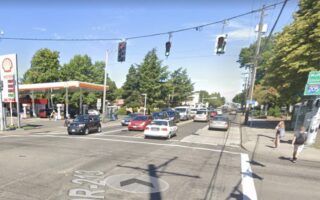
Unlike our Oregon Department of Transportation whose seems to be carrying out a policy to rid their highways of everything but people in cars, the Washington Department of Transportation announced yesterday that it’s getting on the open streets train.
Imagine that. A state DOT voluntarily banning automobile users from lanes and even complete roadways all in the name of safety and health.
“The Safe, Healthy and Active Streets Program (PDF) allows temporary lane reallocations on some state roadways to allow walkers and cyclists more space to maintain physical distance, and to provide greater access to businesses along ‘main street’ highways,” reads the official WashDOT announcement.
The initiative is a joint effort of the state’s health, economic and transportation departments.
Advertisement
Four types of changes will be considered on a temporary basis (up to 90 days) and only on highways with a speed limit of 35 mph or lower:
• Partial highway lane reallocation – temporarily reallocates a portion of highway lanes to provide access and public space for active transportation, and retain a minimum of one lane for through vehicles in each direction.
• Full highway lane reallocation – temporarily reallocates a full highway lane to provide access and public space for active transportation, and retain a minimum of one lane for through vehicles in each direction.
• Complete highway reallocation – allows complete active transportation accessibility and removes vehicle traffic from a section of the entire roadway. Complete reallocations should be limited in duration, such as for weekend closures, and Saturday or Sunday partial or full day closures, and may require a signed detour route.
• On-street parking removal – temporarily removes on street parking to provide access and public space for active transportation while retaining full highway movement
Cities and towns will have to create a traffic plan and submit a formal request to be considered by WashDOT. “Towns could use this reallocation to test and learn from changes they might want to consider implementing in the future,” the state agency said.
It’s great to see flexibility and forward-thinking from a state DOT. That’s something totally foreign to us here in Oregon.
— Jonathan Maus: (503) 706-8804, @jonathan_maus on Twitter and jonathan@bikeportland.org
— Get our headlines delivered to your inbox.
— Support this independent community media outlet with a one-time contribution or monthly subscription.

